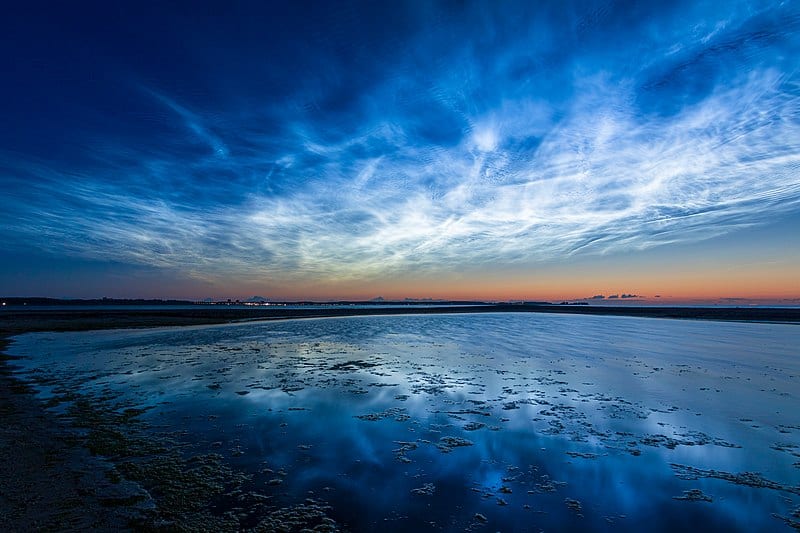In the animal kingdom, nature’s creativity shines through in the unique patterns and features found across various species. From vibrant colors that serve as warnings to intricate patterns that provide camouflage, these adaptations not only play crucial roles in survival but also captivate our attention when captured in photographs. The following are some of the most unusual and visually striking wildlife patterns and features that stand out, each with its own fascinating story to tell.
Zebra’s Stripes
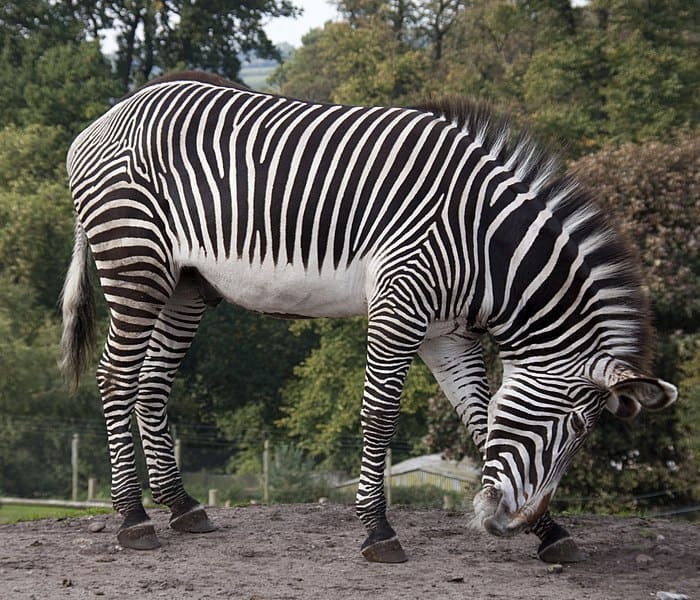
Zebras are renowned for their black-and-white striped coats, which create a mesmerizing visual pattern. Each zebra’s stripe pattern is unique, much like human fingerprints, making them individually identifiable. The stripes may serve as camouflage in the dappled light of their environment or as a deterrent to biting flies. In motion, a herd of zebras can appear as a blur of black and white, confusing predators. The striking contrast of their stripes also serves a social function, helping them recognize each other.
Peacock’s Iridescent Tail Feathers
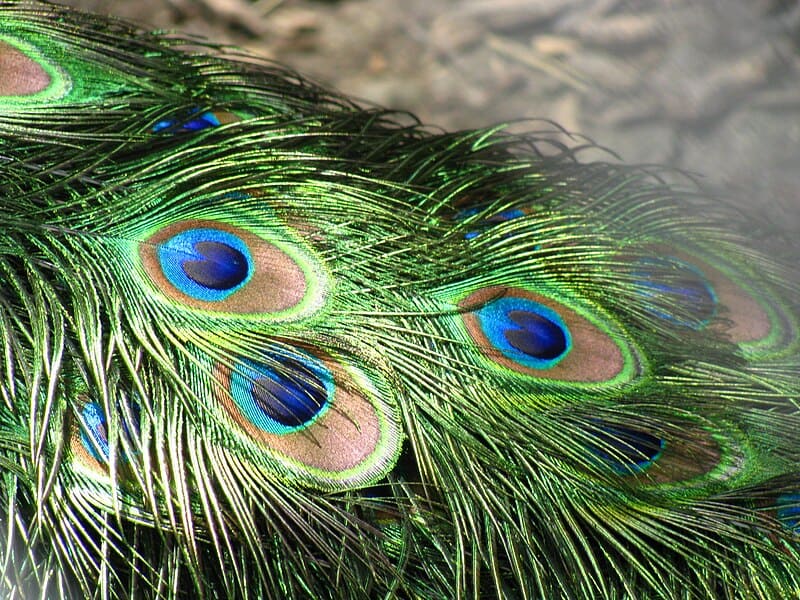
The male peacock’s tail, or train, is a spectacular display of iridescent feathers that shimmer with hues of blue, green, and gold. Each feather ends in an “eye” pattern, a circular design that adds to the bird’s allure. The iridescence is caused by microscopic structures in the feathers that refract light, creating vibrant colors that change depending on the viewing angle. When a peacock fans its tail, it forms an awe-inspiring, colorful fan used to attract mates. The display is not only a visual feast but also a complex dance of colors and light.
Tiger’s Camouflaging Stripes
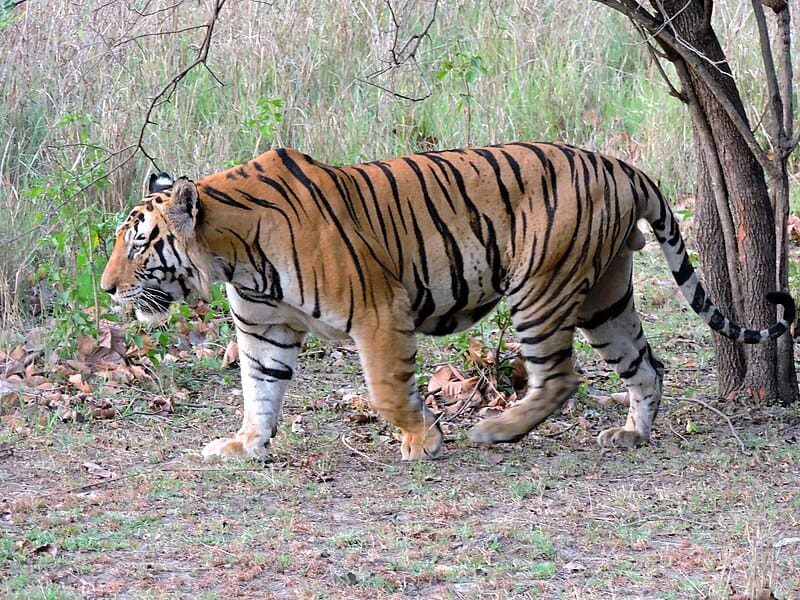
A tiger’s coat is a marvel of natural camouflage, with black stripes overlaying an orange-and-white background. The stripes break up the outline of the tiger’s body, helping it blend into the forested or grassland habitats. Each tiger’s stripe pattern is distinct, aiding in individual identification among researchers. The boldness of the stripes contrasts with the animal’s stealthy nature, making it both a fearsome predator and a stunning visual subject. The patterns are most effective in dense vegetation, where the tiger becomes nearly invisible.
Chameleon’s Color Change

Chameleons are famous for their ability to change colors, a feature that serves multiple purposes such as camouflage, temperature regulation, and communication. Their skin contains special cells called chromatophores that allow them to alter their coloration based on mood, light, and temperature. The color shift can be rapid and dramatic, making chameleons fascinating subjects for photography. This ability also helps them avoid predators and surprise prey. A chameleon’s color transformation is not only a survival mechanism but also an incredible display of nature’s artistry.
Butterfly Wing Patterns
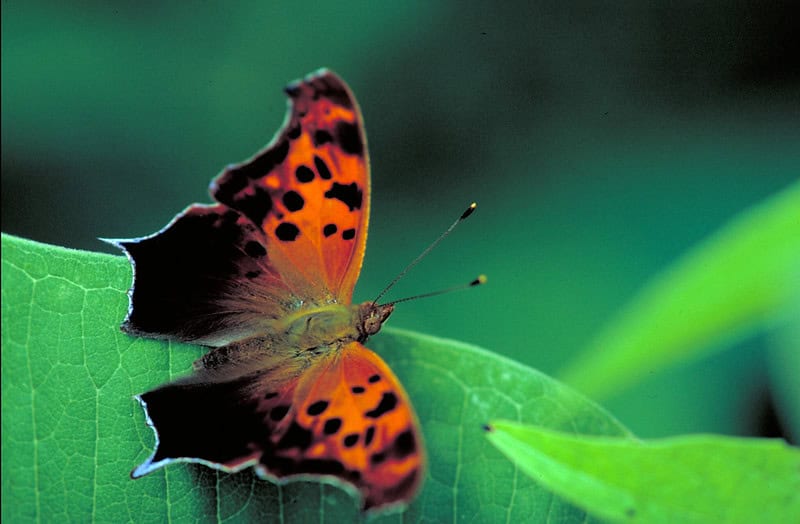
Butterfly wings are adorned with intricate patterns and colors that serve various purposes, from attracting mates to warding off predators. Some species feature eye spots on their wings, which can startle or confuse predators, making the butterfly appear larger or more threatening. The delicate symmetry and vibrant colors of butterfly wings make them favorite subjects for macro photography. These patterns are not only beautiful but also functional, playing a key role in the butterfly’s survival. The wings’ scales reflect light in ways that can make the colors appear to shimmer and shift.
Giraffe’s Patchwork Coat
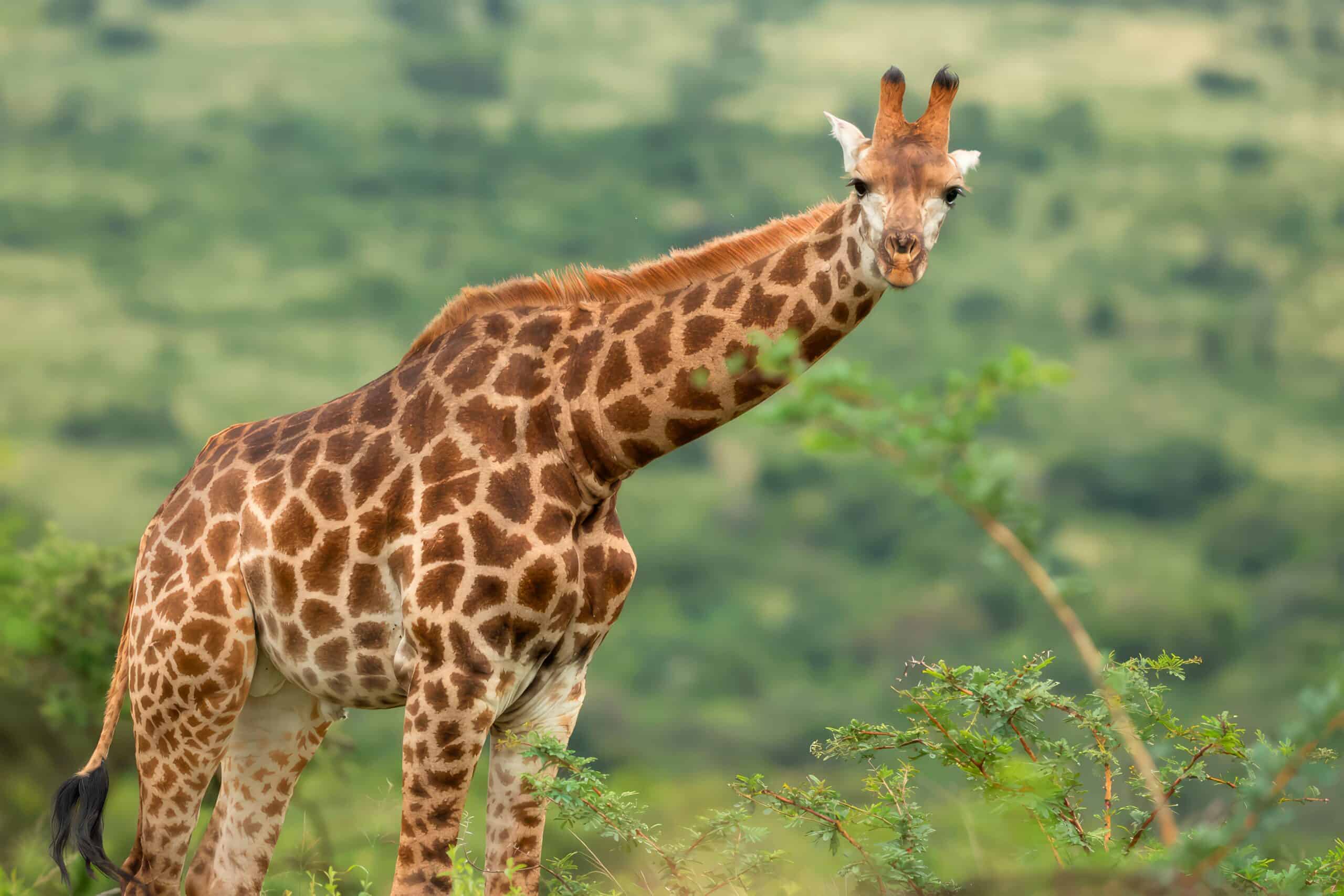
The giraffe’s coat is covered in a distinctive pattern of irregular patches that vary from light tan to deep brown. Each giraffe has a unique pattern that helps it blend into the savanna, breaking up its massive outline. The coat’s coloration also plays a role in thermoregulation, with the darker patches absorbing more heat. This pattern, when viewed up close, reveals the intricate beauty of each spot, making giraffes striking subjects for wildlife photography. The randomness of the patches adds an element of surprise to each sighting.
Octopus Skin Texture and Color Change
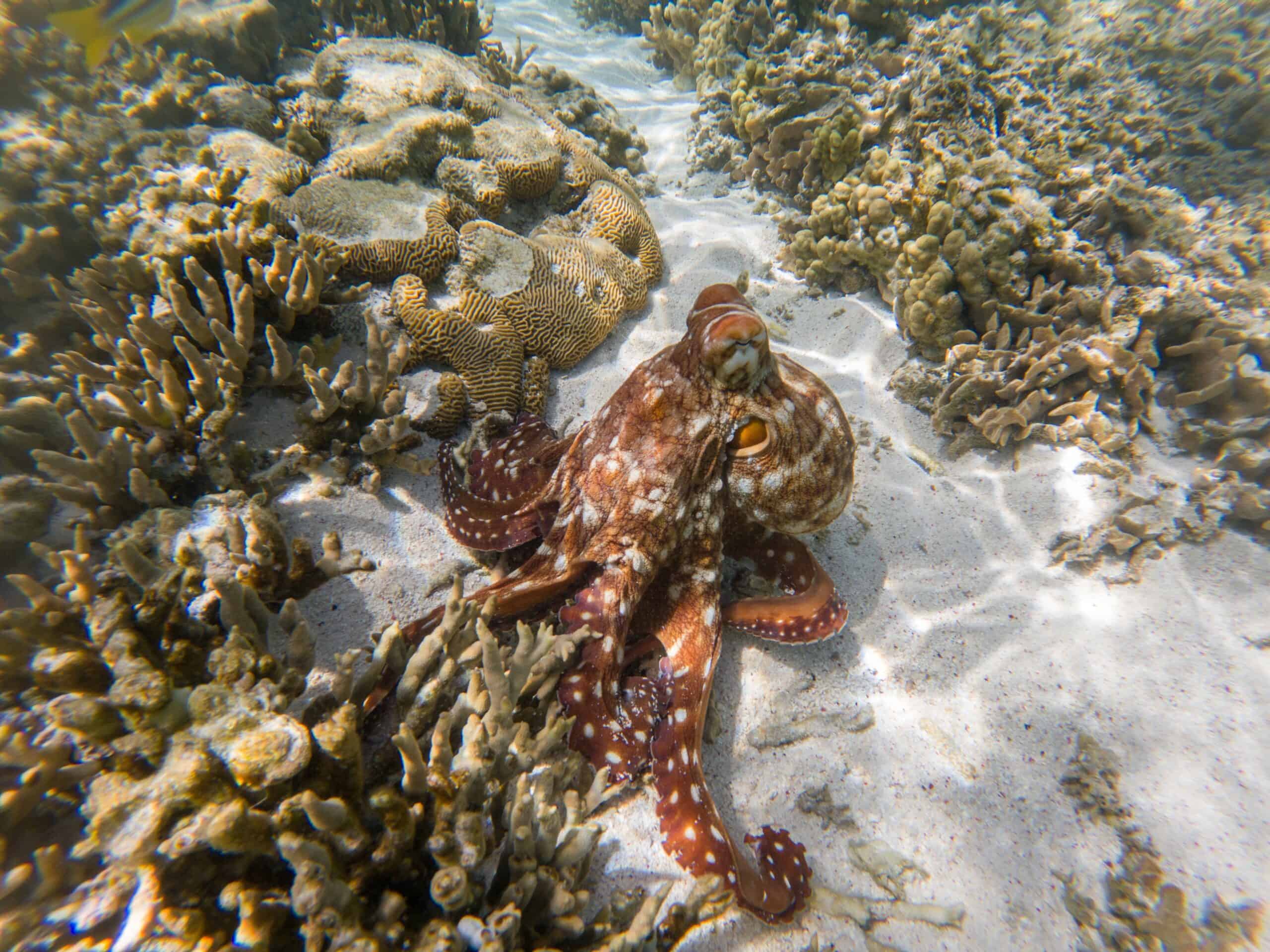
The octopus is a master of disguise, capable of changing both its skin color and texture to match its surroundings with astonishing precision. This ability is facilitated by chromatophores in its skin, which can expand or contract to produce different colors, and by muscles that alter the skin’s texture. The result is an incredible mimicry of coral, rocks, or the seafloor, making the octopus almost invisible. This adaptive camouflage is crucial for both hunting and avoiding predators. The octopus’s skin, with its shifting hues and textures, is a dynamic and captivating sight.
Snow Leopard’s Camouflage
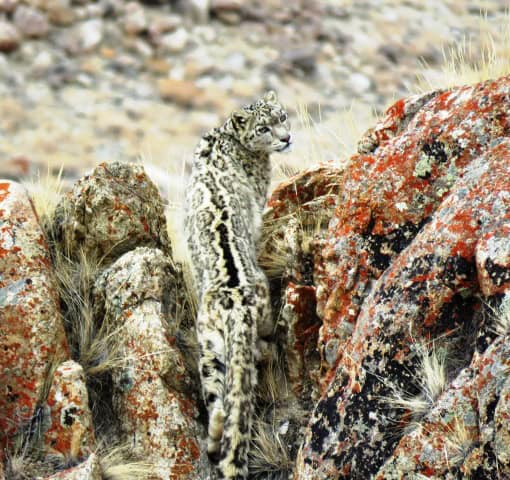
The snow leopard’s fur is patterned with rosettes and spots that blend seamlessly with the rocky, snowy environments of its high-altitude habitat. This camouflage is so effective that the snow leopard is often called the “ghost of the mountains.” The pale base color of its fur helps it merge with the snow, while the rosettes break up its outline among rocks. The pattern is not just for camouflage but also serves as insulation, with dense fur helping to retain heat in freezing temperatures. The elusive nature of the snow leopard, coupled with its perfect camouflage, makes spotting one a rare and thrilling experience.
Mandarin Fish’s Vibrant Colors
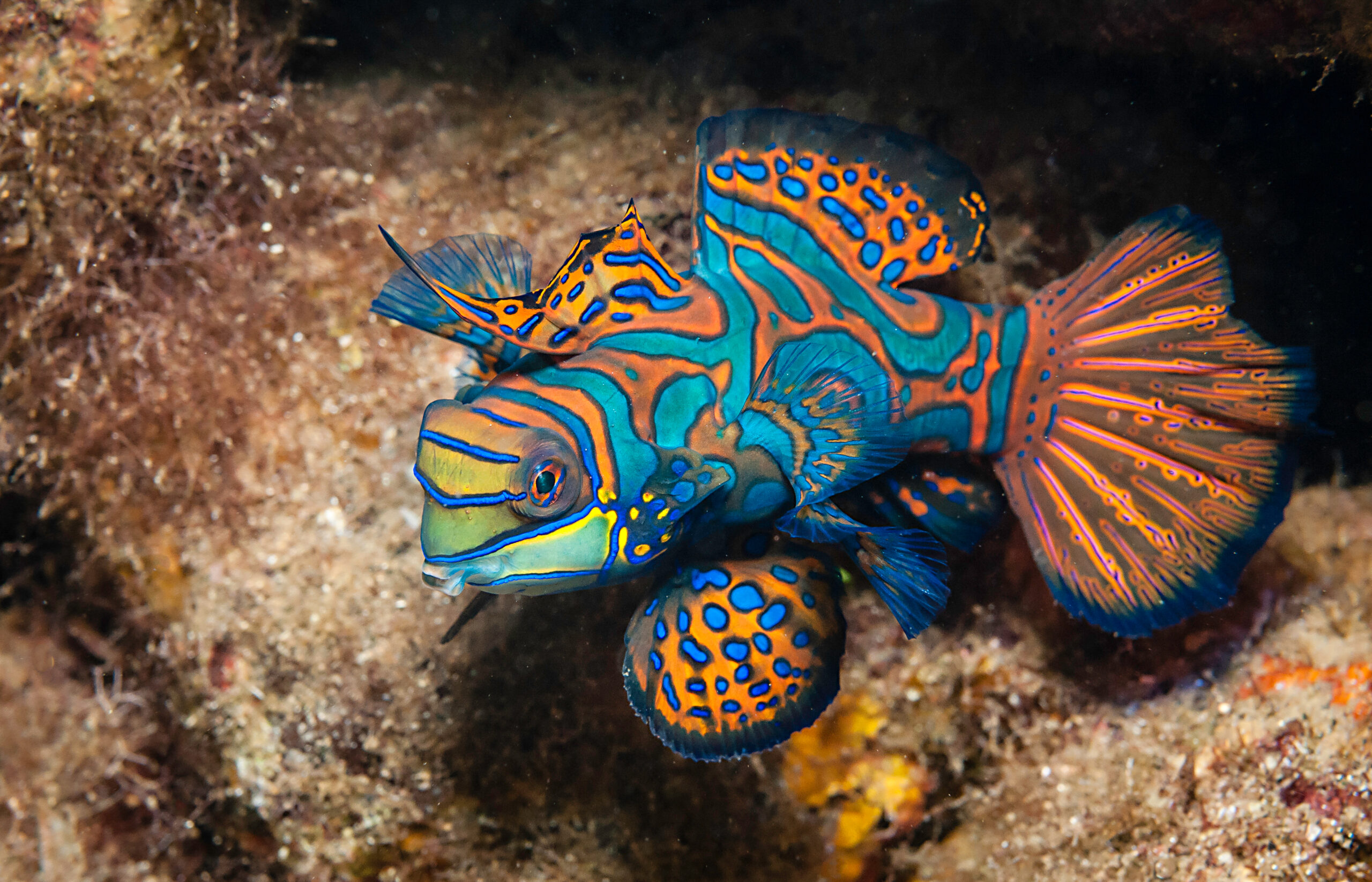
The mandarin fish is a small, yet extraordinarily colorful species, adorned with swirling patterns of blue, orange, and green. The bright colors are due to cellular pigments and the iridescence of their skin, creating a psychedelic effect. These vibrant patterns make the mandarin fish one of the most sought-after subjects for underwater photographers. The bold coloration also serves as a warning to predators, as the mandarin fish produces toxic mucus. Its striking appearance in the coral reefs contrasts beautifully with its surroundings, making it a jewel of the ocean.
Ocelot’s Rosette Patterns
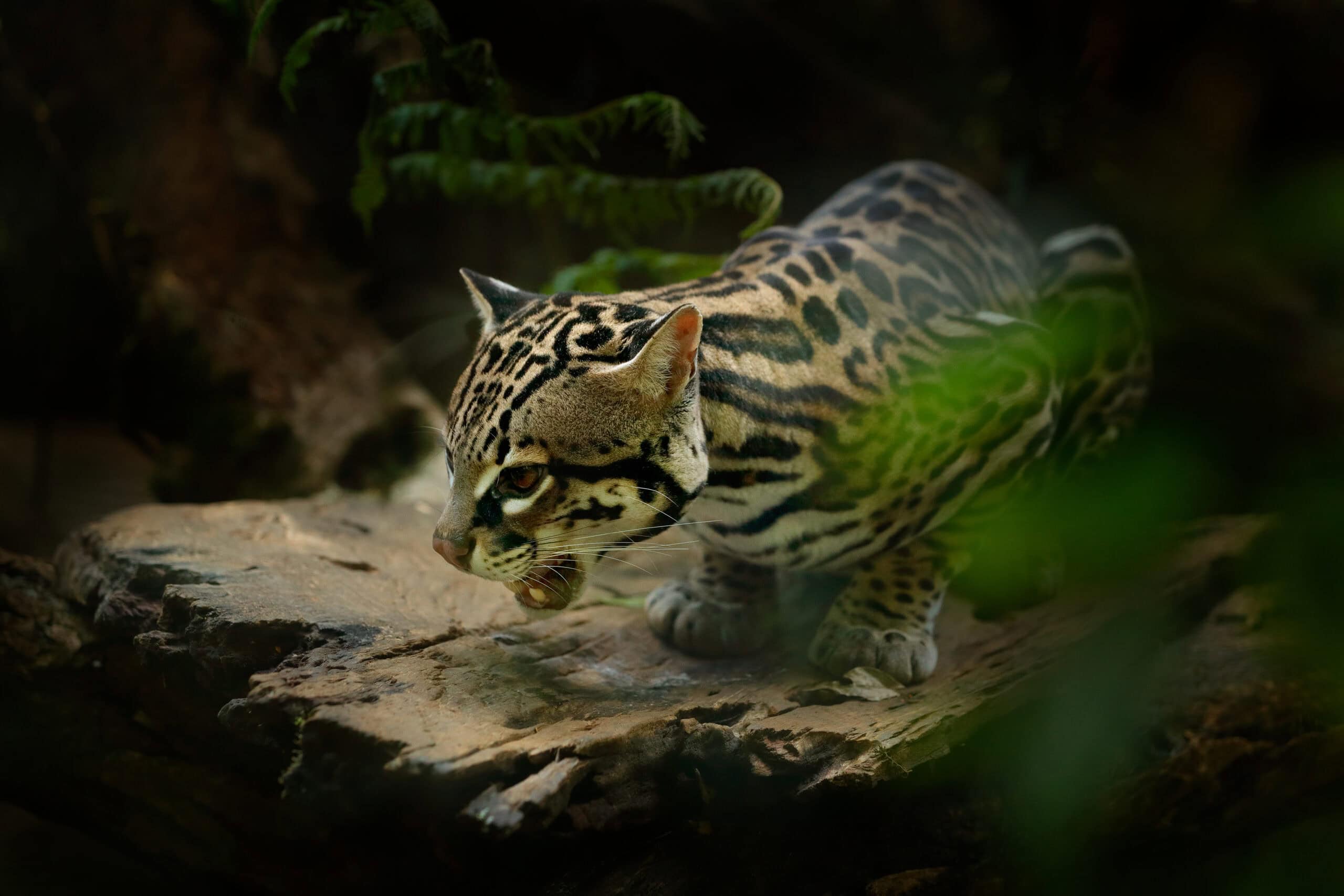
The ocelot’s fur is covered in intricate rosette patterns, similar to those of leopards and jaguars, but smaller and more densely packed. These patterns provide excellent camouflage in the dense forests and grasslands where the ocelot lives. The rosettes vary in size and shape, with dark outlines and a lighter center, creating a beautiful mosaic on the animal’s coat. This patterning not only aids in stealth but also adds to the ocelot’s allure, making it a favored subject for wildlife photographers. The contrast between the animal’s sleek form and its complex coat pattern creates a stunning visual.
Poison Dart Frog’s Warning Colors
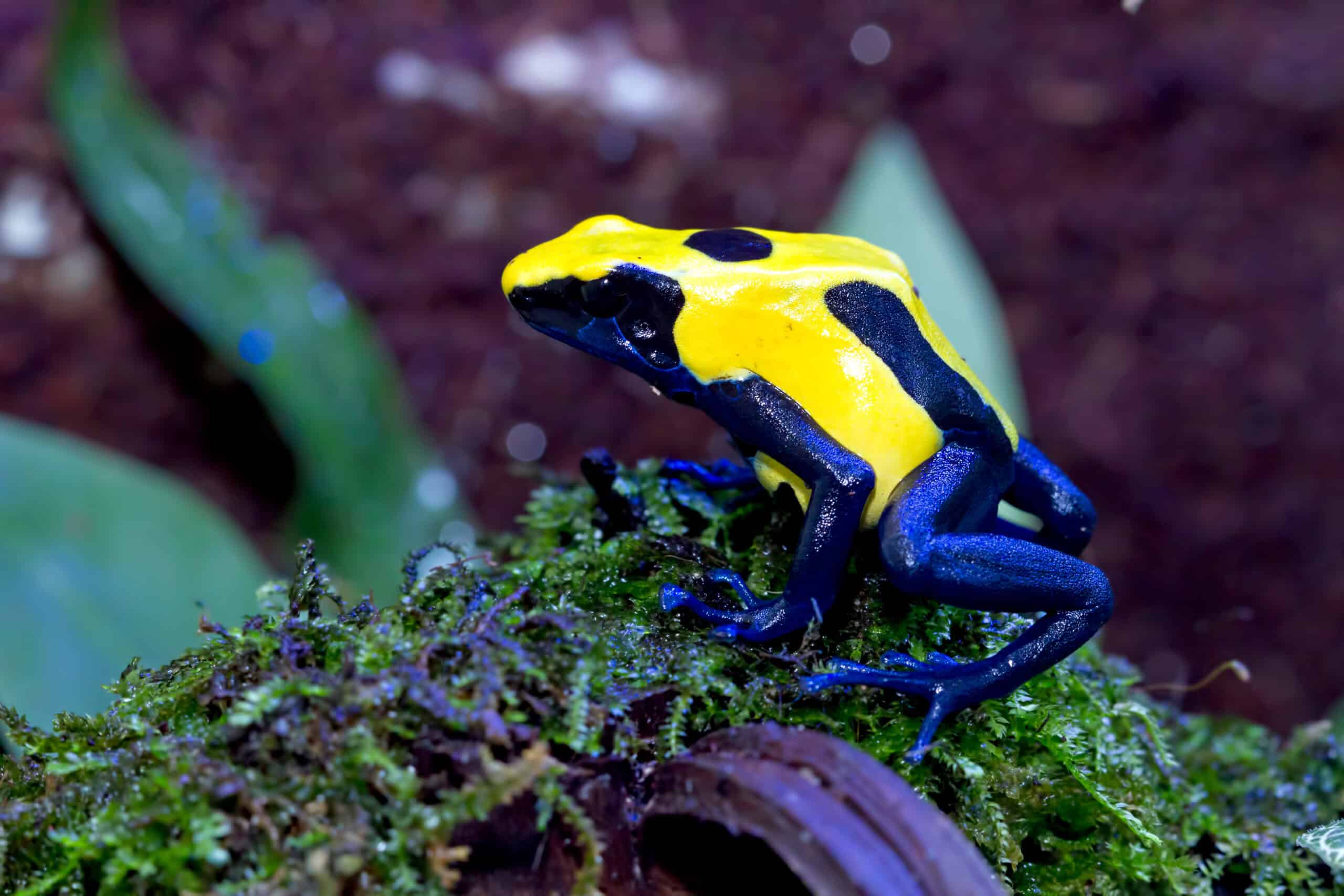
Poison dart frogs are known for their bright, eye-catching colors, which serve as a warning to potential predators. These colors can range from vibrant blues and reds to yellows and greens, often arranged in bold patterns that signal the frog’s toxicity. The contrast between the frog’s small size and its vivid coloration makes it stand out sharply in its rainforest habitat. This aposematic coloration is a classic example of how animals use visual signals to communicate danger. The patterns and hues of poison dart frogs are not just for show but are integral to their survival strategy.
Pangolin’s Scaly Armor
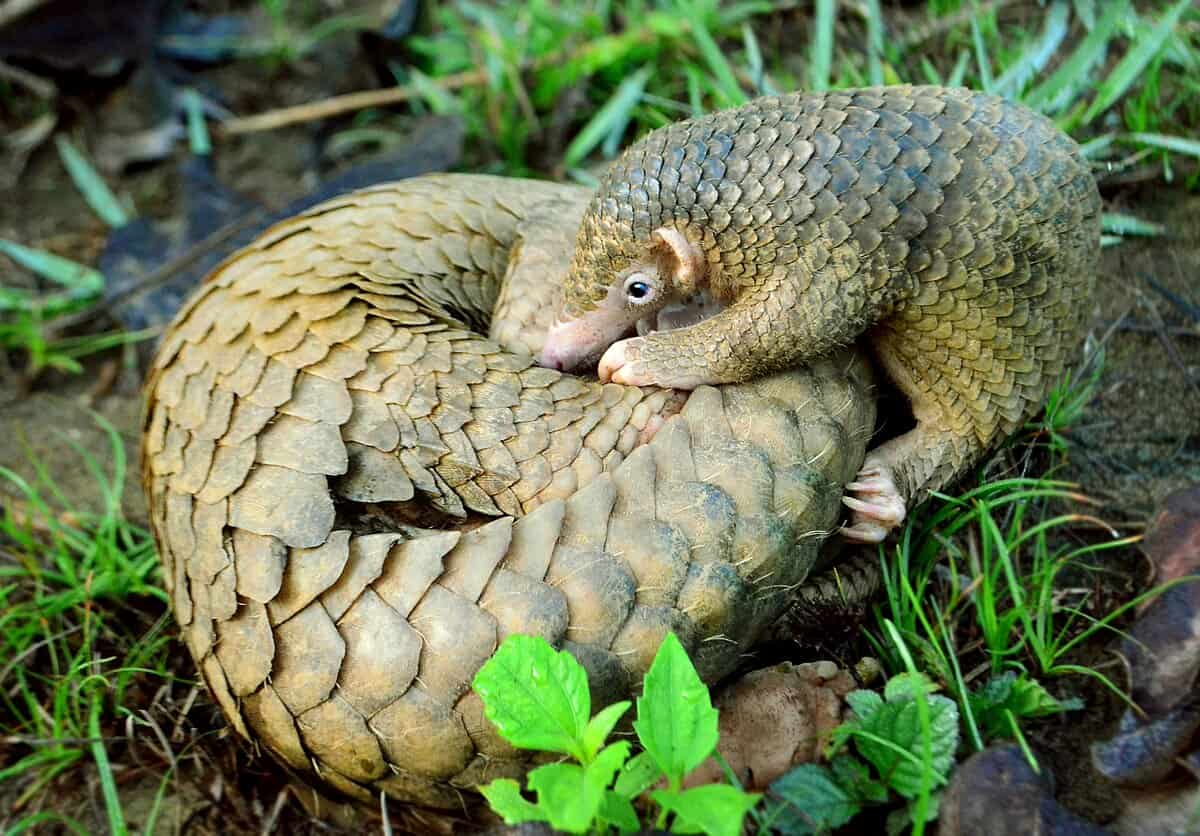
The pangolin’s body is covered in large, overlapping scales made of keratin, the same material as human nails. These scales form a protective armor that shields the pangolin from predators, and when threatened, it rolls into a tight ball, making it nearly impenetrable. The texture and arrangement of these scales create a unique, almost prehistoric pattern that is both functional and visually striking. Despite their tough appearance, pangolins are gentle creatures, and their scales’ intricate design is a fascinating aspect of their biology. The scaly pattern provides both physical protection and a distinctive look that sets pangolins apart from other mammals.
Leaf-Tailed Gecko’s Mimicry
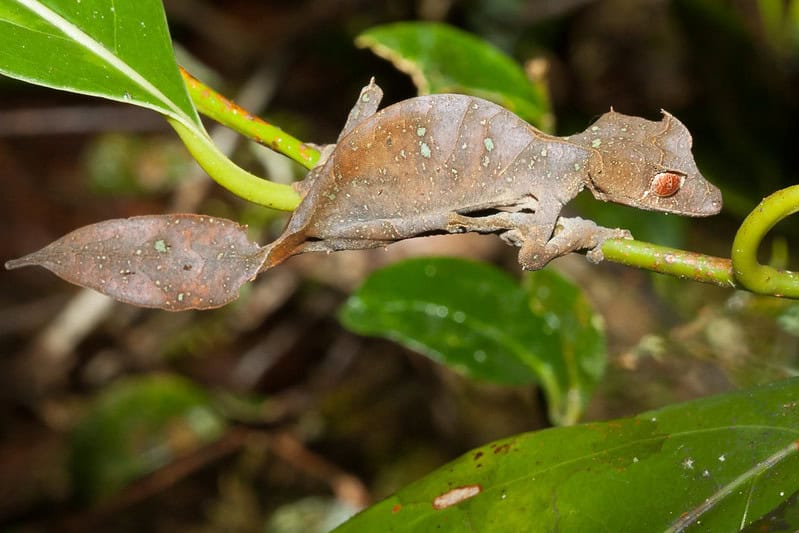
The leaf-tailed gecko is a master of disguise, with a body shape and skin pattern that closely resemble a dead leaf. The gecko’s tail is flattened and shaped like a leaf, complete with veins and a stem-like structure, enhancing the mimicry. Its skin features mottled patterns of browns and grays that blend seamlessly with the forest floor, helping it avoid predators. This extraordinary camouflage makes the leaf-tailed gecko one of the most cryptic creatures in the animal kingdom. The detailed mimicry is so convincing that the gecko can be almost impossible to spot even at close range.
Flamingo’s Pink Plumage
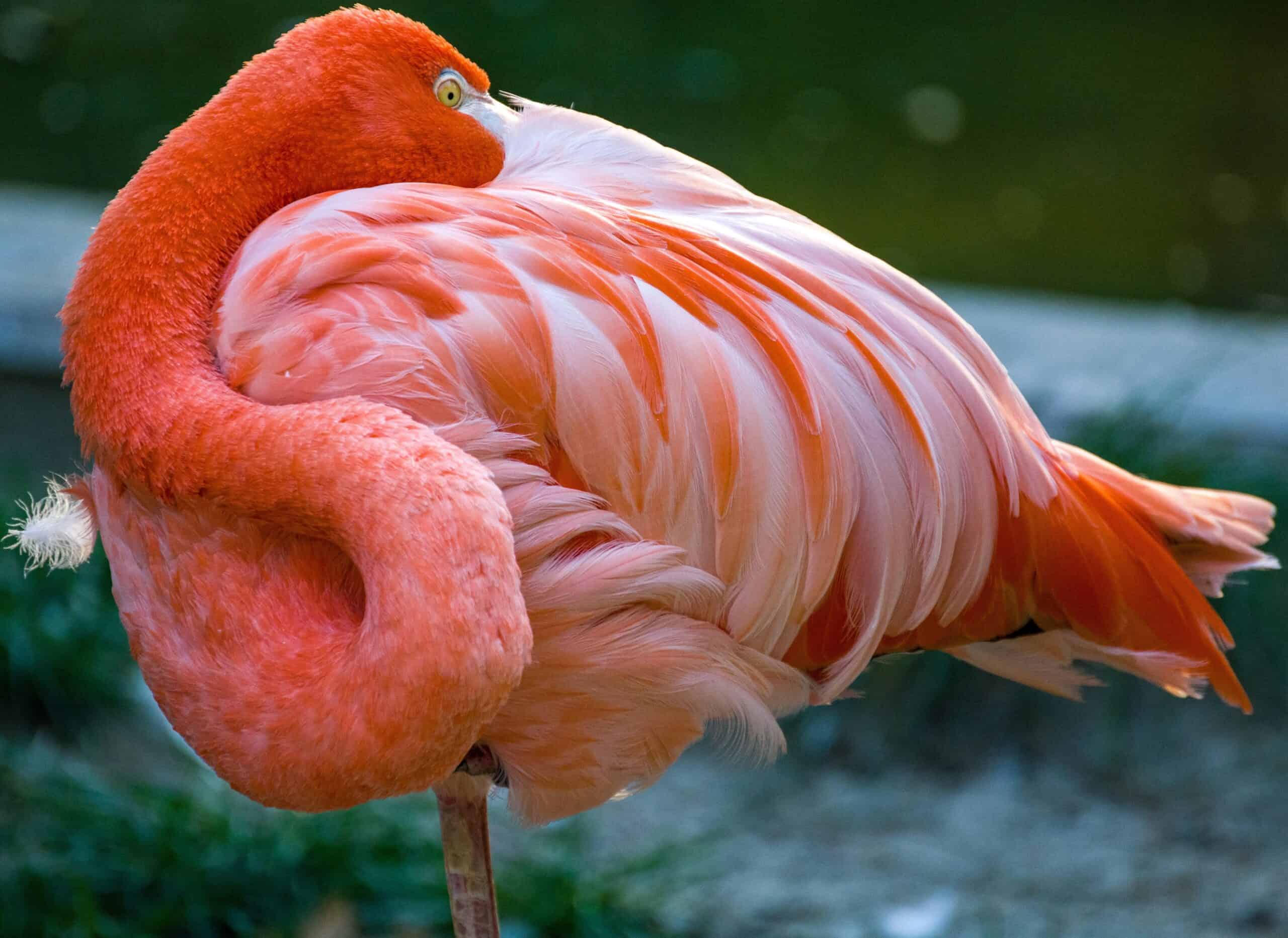
Flamingos are instantly recognizable by their vibrant pink feathers, which result from their diet of algae and crustaceans rich in carotenoids. The intensity of the pink color can vary, but when flamingos gather in large flocks, the effect is a breathtaking sea of pink. This coloration is not only striking but also a key element of their social behavior, with brighter individuals often being more successful in attracting mates. The elegant curvature of their necks and their long legs, combined with the soft pink hue, make flamingos a favorite subject for wildlife photographers. The flamingo’s pink plumage is a vivid reminder of the link between diet and coloration in the animal world.
Okapi’s Striped Legs
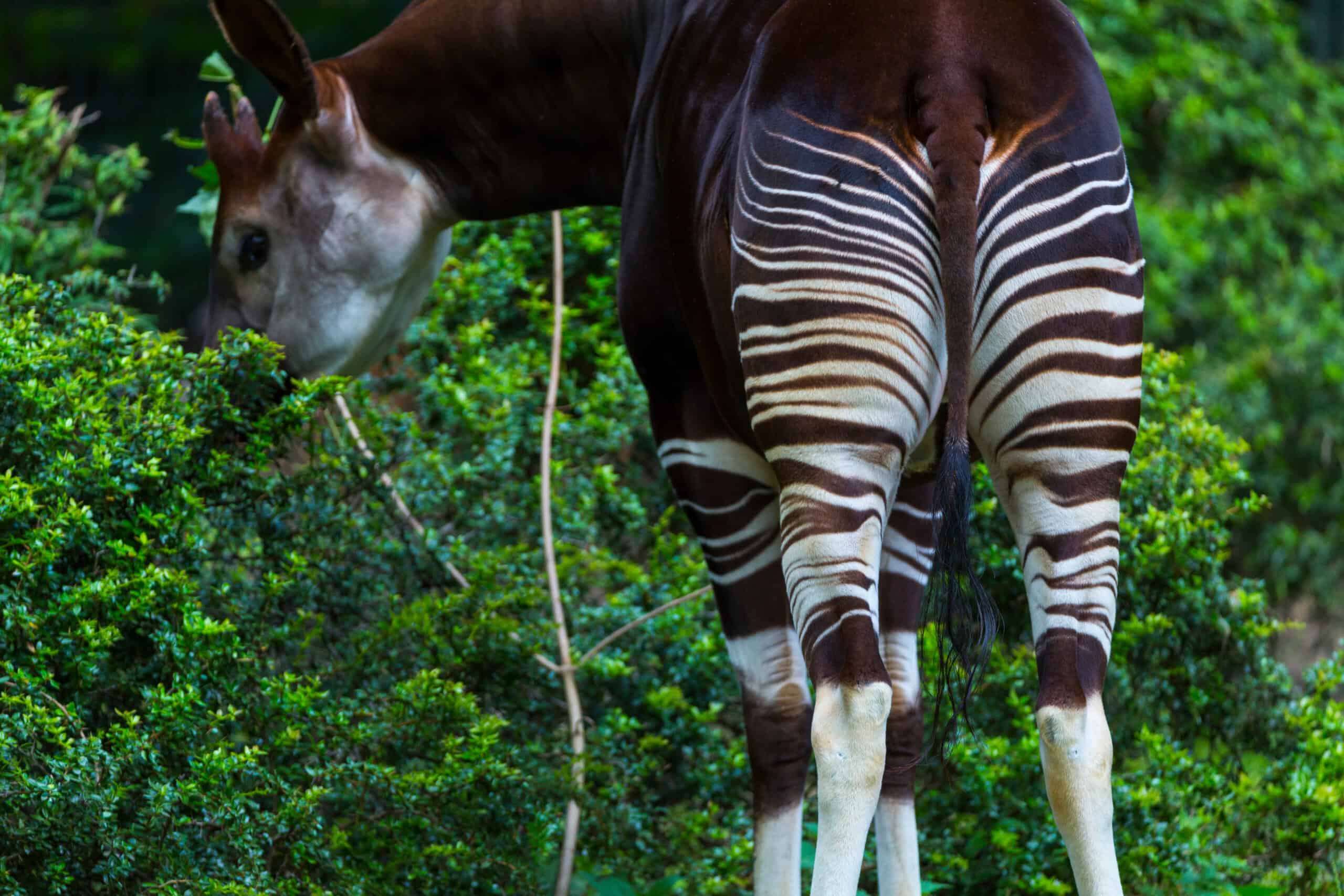
The okapi, a relative of the giraffe, has a unique coat that combines dark brown fur with striking white horizontal stripes on its legs. These stripes resemble those of a zebra and serve as camouflage in the dense rainforest, where the dappled light creates a striped effect on the forest floor. The okapi’s stripes are thought to help young calves follow their mothers through the undergrowth. The contrast between the dark body and the white-striped legs creates a visually striking pattern. This unusual combination of features makes the okapi one of the most intriguing and lesser-known animals in the animal kingdom.
Axolotl’s External Gills
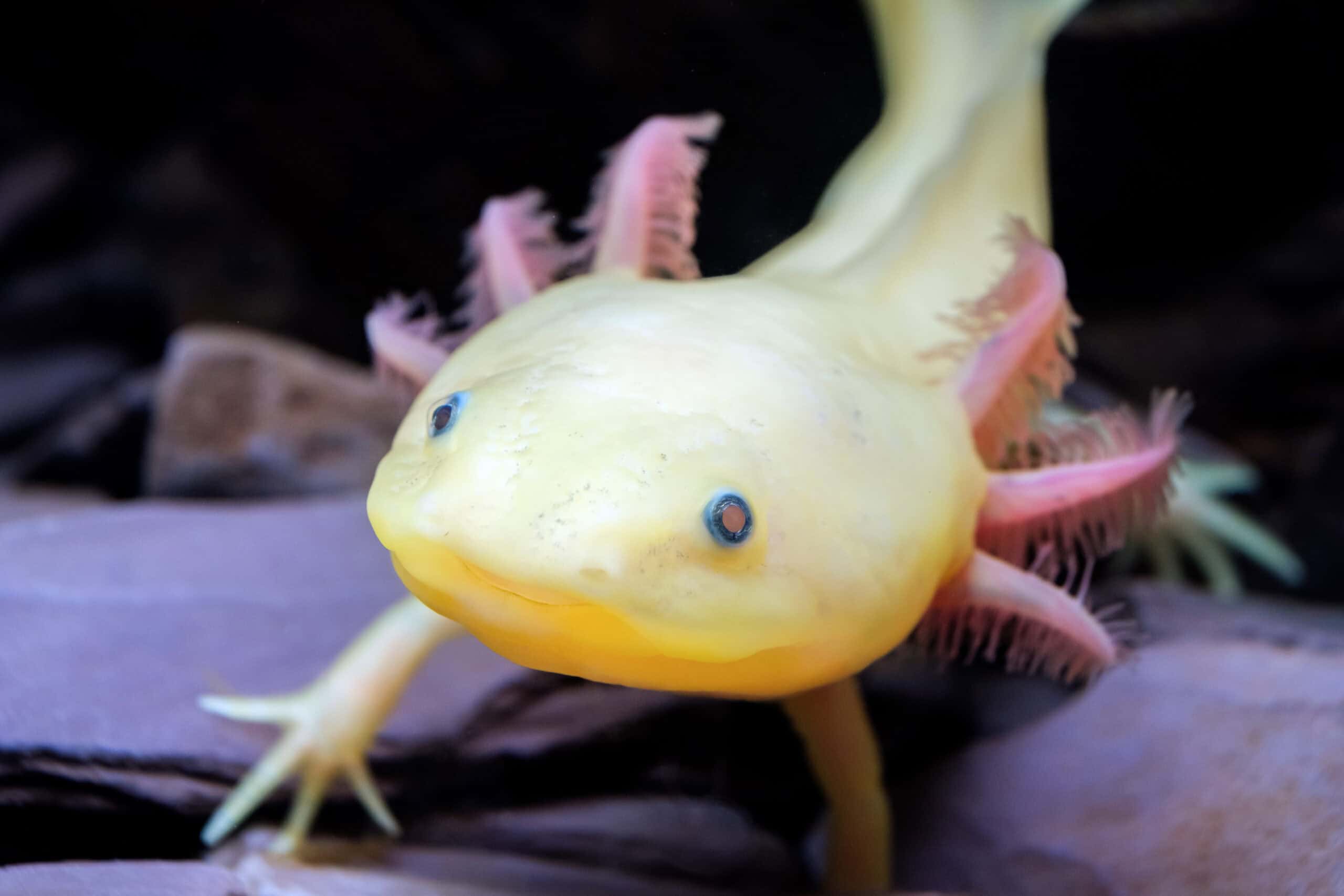
The axolotl, an aquatic salamander, is known for its external gills, which protrude from the sides of its head like feathery plumes. These gills, which are often pink or red, create a striking contrast against the axolotl’s pale body. The gills are not only functional, allowing the axolotl to breathe underwater, but also contribute to its otherworldly appearance. This amphibian’s ability to regenerate limbs adds to its mystique, making it a subject of fascination in both scientific and photographic communities. The delicate fronds of the gills give the axolotl a unique and almost alien-like aesthetic.
Quetzal’s Iridescent Feathers
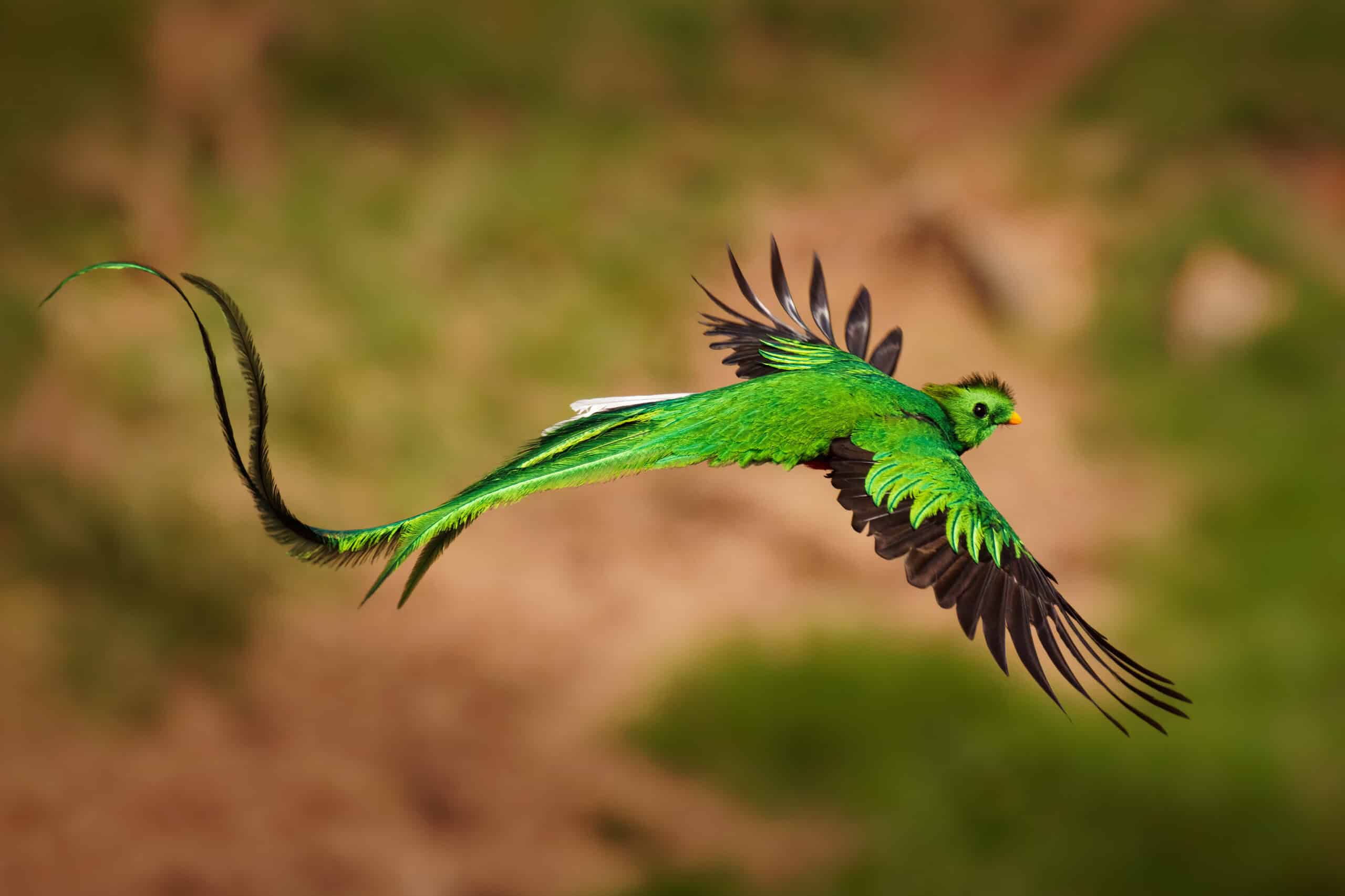
The quetzal is a bird famous for its brilliant iridescent green and red feathers, which shimmer in the sunlight. These feathers, particularly the long tail feathers of the male, have a metallic sheen that changes color depending on the angle of the light. The quetzal’s radiant plumage has made it a symbol of beauty and freedom in many cultures, and it is often considered one of the most beautiful birds in the world. The iridescence is due to microscopic structures in the feathers that refract light, creating a dazzling effect. The quetzal’s feathers are not just visually stunning but also carry deep cultural significance in its native habitat.
Emperor Penguin’s Tuxedo-Like Appearance
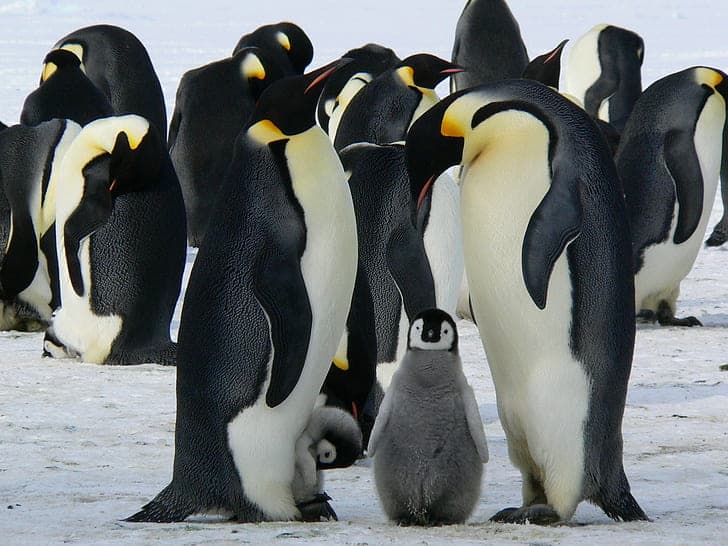
The emperor penguin’s black-and-white plumage resembles a formal tuxedo, giving these birds a dignified and almost human-like appearance. The contrast between the dark back and the white belly helps them blend into the icy Antarctic environment when viewed from above or below. This pattern also plays a role in thermoregulation, with the dark feathers absorbing heat from the sun. Emperor penguins’ striking coloration is complemented by their golden ear patches, adding a touch of color to their monochrome appearance. This visual combination makes them one of the most iconic and recognizable species of penguins.
Orchid Mantis’ Flower-Like Appearance
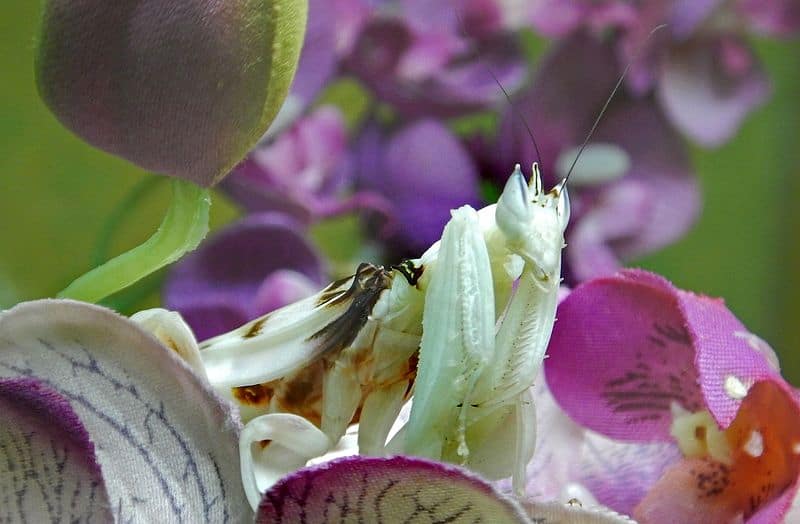
The orchid mantis is an insect that closely resembles a flower, particularly the orchid, with petal-like legs and a body that mimics the delicate shapes and colors of a blossom. This extraordinary mimicry allows the mantis to blend into its floral surroundings, making it almost invisible to both predators and prey. The mantis’s pink and white coloration, along with its ability to sway gently like a flower in the breeze, enhances the illusion. This deceptive appearance is a perfect example of nature’s creativity in the evolution of survival strategies. The orchid mantis’s appearance is so convincing that it can even attract pollinators, which it then preys upon.
Red Panda’s Rusty Fur
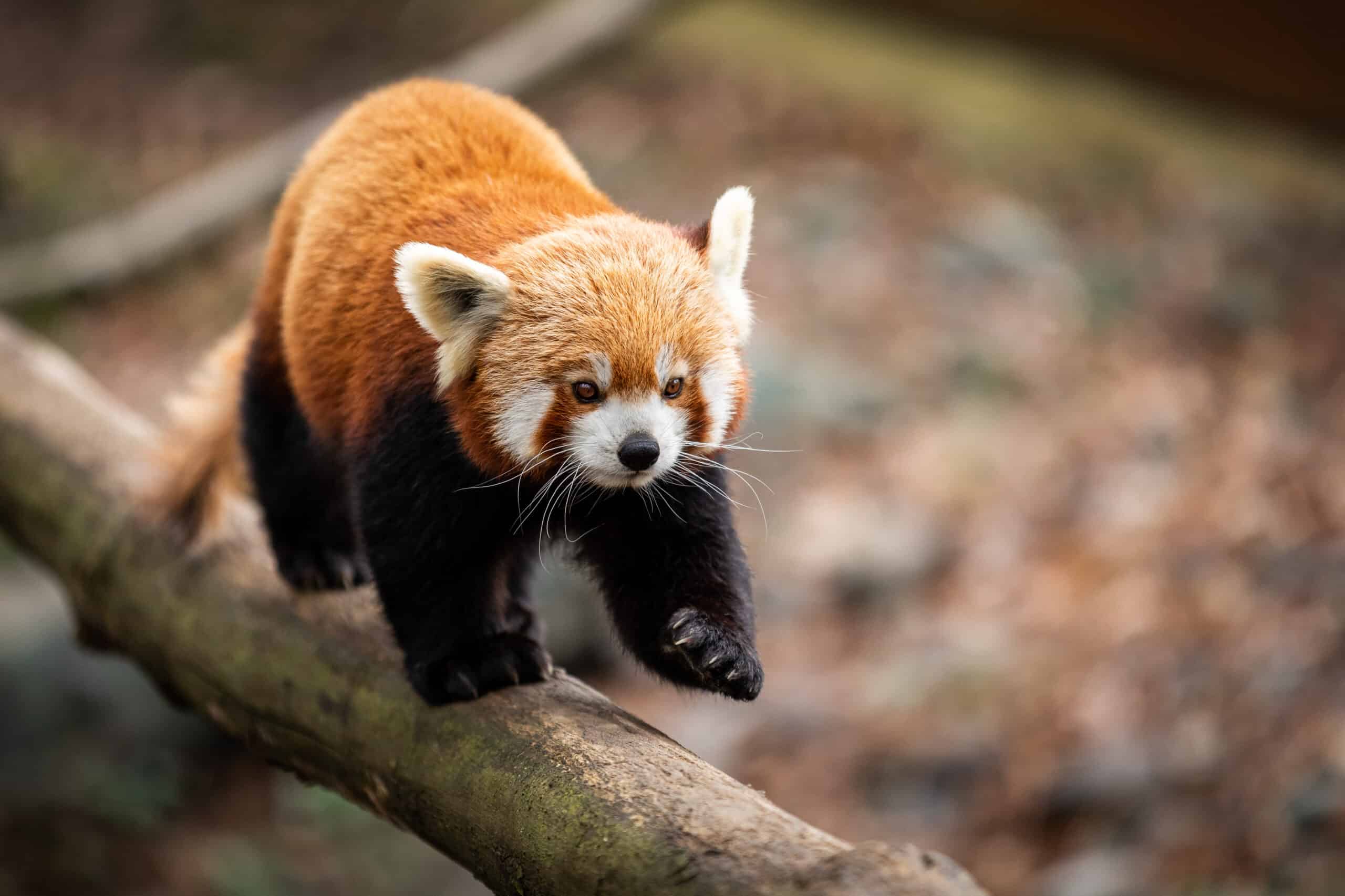
The red panda’s coat is a rich, rusty red, with white facial markings and ringed tails that contrast sharply with the green bamboo forests of its habitat. This coloration helps the red panda blend in with the reddish-brown moss and lichen-covered trees, making it less visible to predators. The red panda’s fur is thick and soft, providing insulation against the cold climates where it lives. The combination of its coloration and its playful, cat-like appearance makes the red panda an appealing subject for wildlife photographers. The red panda’s distinctive fur pattern is as much a survival tool as it is an endearing feature.
This article originally appeared on Rarest.org.
More From Rarest.Org
The night sky has always been a source of wonder and mystery, offering more than just the stars and the moon. Beyond the usual celestial sights, there are rare and unusual phenomena that can take your breath away. Read more.
When it comes to luxury travel, few experiences can match the exclusivity and comfort of a private jet service. Offering unparalleled convenience, personalized attention, and top-of-the-line amenities, these services cater to those who value privacy and efficiency in their journeys. Read more.
In the ever-evolving world of technology, premium gadgets and devices are setting new standards for innovation and luxury. From cutting-edge laptops and smartwatches to immersive audio systems and next-generation cameras, these high-end products offer more than just functionalityâthey redefine the user experience. Read more.

